Plastic-free garden ideas: How to reduce plastic waste in your garden
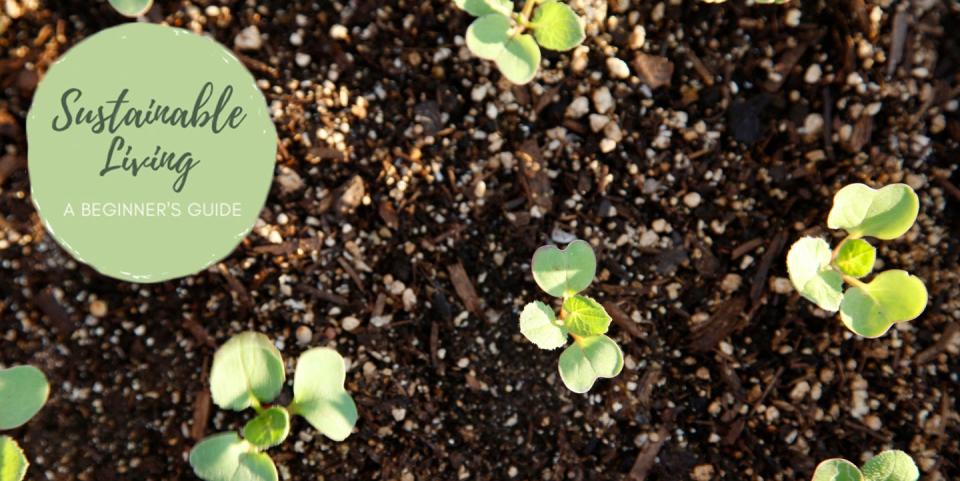
Is your garden a plastic-free zone? It’s easier than you think to start making the switch and reduce your plastic use going forward.
Plastic has a huge, negative impact on our environment, and from plant labels to compost bins, it's actually a pretty big feature in our gardens too. Take, for example, the plastic plant pot. Its invention in the 1960s was a game changer and today it’s estimated that 500 million plastic plant pots and seed trays are sold every year, with many ending up in landfill or incinerated. The reality is that with a large quantity of fossil fuel used in the production of plastic pots, it will take around 500 years to decompose.
There’s been a big focus on food and drinks packaging in the war against plastic with retailers making bold plastic-free pledges following pressure from customers, but attention is also shifting towards gardening. Take a look at some of the small changes you can make to use less plastic in the garden.
Seek alternatives
'It may seem obvious but the most effective way to reduce plastic in your garden is to simply stop buying it,’ explains The Greenhouse People. ‘With demand growing, more garden centres are offering biodegradable pots made using materials such as coir (from coconut husks), wood chips, rice husks and even seaweed. Terracotta also makes a great rustic alternative.'
Meanwhile, Alys Fowler suggests buying Vipot. She explains in a post on Friends of the Earth: 'I particularly like Vipots (they look and feel like regular pots but are plastic-free) – if cared for they last several years. When they do finally crack, they can go straight on to the compost.'
BUY NOW Vipot Biodegradable Plant Pots via Amazon
Alternatively, Burgon & Ball's Paper Pot Maker essentially enables you to make pots from recycled newspaper, which is great for seedlings. When it’s time to plant out the seedlings, just simply pop everything into the ground and the paper will eventually biodegrade.
BUY NOW Burgon & Ball's Paper Pot Maker via Amazon
If you’re feeling extra resourceful and green-fingered, scoop out the insides of half a lemon and fill with soil, before scattering a small number of seeds. Once the seedlings sprout, you can transfer to a larger area. Lemon peel also acts as a natural fertiliser, making it a great multi-purpose alternative to plastic.
Finally, check with your local garden centre or nursery to see if they reuse or recycle pots.
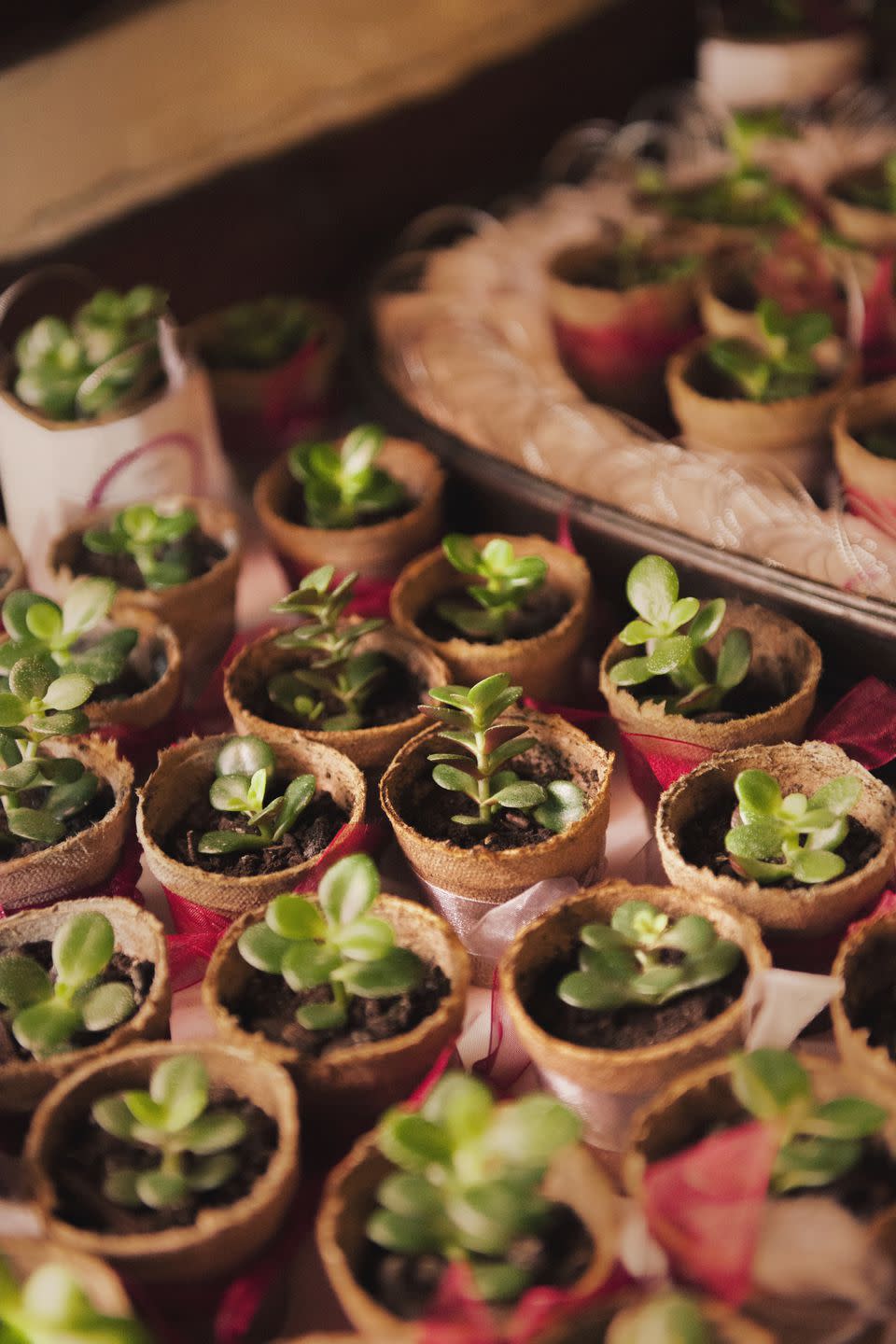
Make your own compost
'Good gardens are defined by good soil. When loved and cared for, soil creates a home for everything else,' says Alys. 'Any green gardener’s mantra must start with making compost to feed your soil. Compost also stops biodegradable and organic material from ending up in landfill.'
Want to make your own compost? The Greenhouse People suggests these essentials: Shredded paper, stale food, coffee grounds and filters.
‘Other household staples you can substitute plastic bags of compost for include tea bags (non-plastic), cooked pasta and rice,’ they explain. ‘Weirder still, you can even make use of hair and dead plants.’
Remember, compost heaps are also an important wildlife habitat – even more reason to start making your own compost today.

Upcycle broken pots
Plastic is durable and very unlikely to break, but the same cannot be said for the more brittle terracotta and ceramic pots. However, this doesn’t mean that you should dispose of them if they break. Apply the philosophy of wabi-sabi and embrace imperfections, while also adopting the basic idea of upcycling and finding new uses for old items.
Plant pot shards are easy to repurpose. You can place them in larger pots to protect the soil from unwelcome pests or stick them in the ground and write on them to create handy plant labels.

Plants and accessories
When it comes to buying bare root trees, check that the plants are wrapped in paper, rather than plastic – this is particularly important if buying online.
Get into the habit of reusing compost bags to store compost, turning leaves into leaf mould, or using plastic bottles to store food. Additionally, if you need to tie back your plants, use natural jute twine instead, it's 100 per cent biodegradable.
BUY NOW Jute Twine via Amazon
When it comes to plant labels, eco-conscious gardeners should seek out wooden, slate and metal labels – it will last for years. In fact, in Alys Fowler's 2017 Guardian column, she suggests using tomato paste tube labels, an idea she got from Alison, an inspirational allotmenteer. 'Cut off the top and bottom of a tomato paste tube, then cut down the middle so you can flatten it, and wash it. Cut it into strips of a desired size and write on it with a ballpoint pen,' she explains.
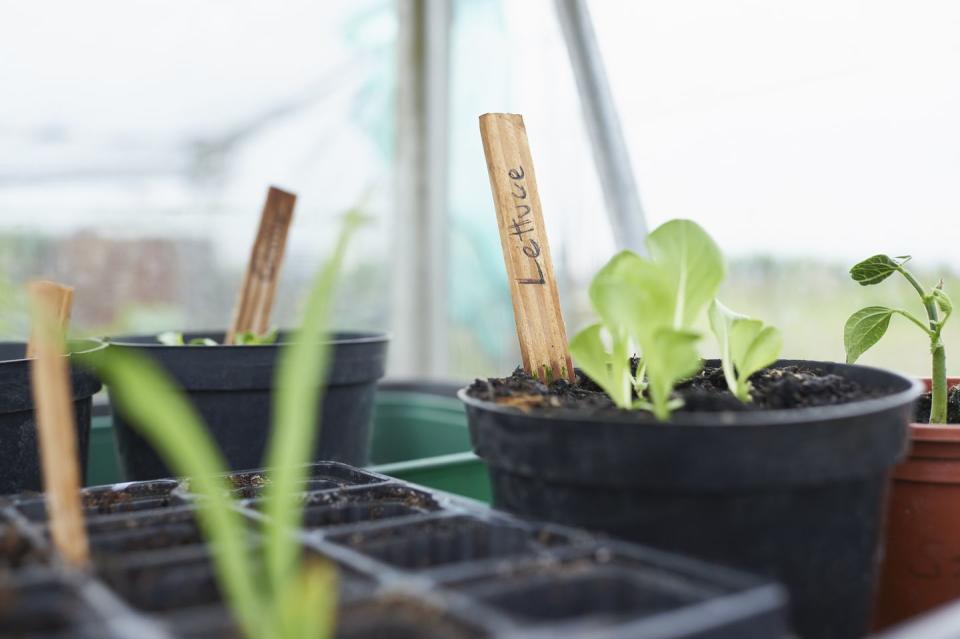
Swap seeds
Michael Perry, aka Mr Plant Geek, suggests a sustainable way to plant new seeds. 'Seed packets can be made of plastic, or contain smaller zip-lock bags which ultimately just get thrown away,' he writes on his blog. 'Instead of buying seeds, try looking online for a community seed swap, or simply swap with a friend or neighbour!'
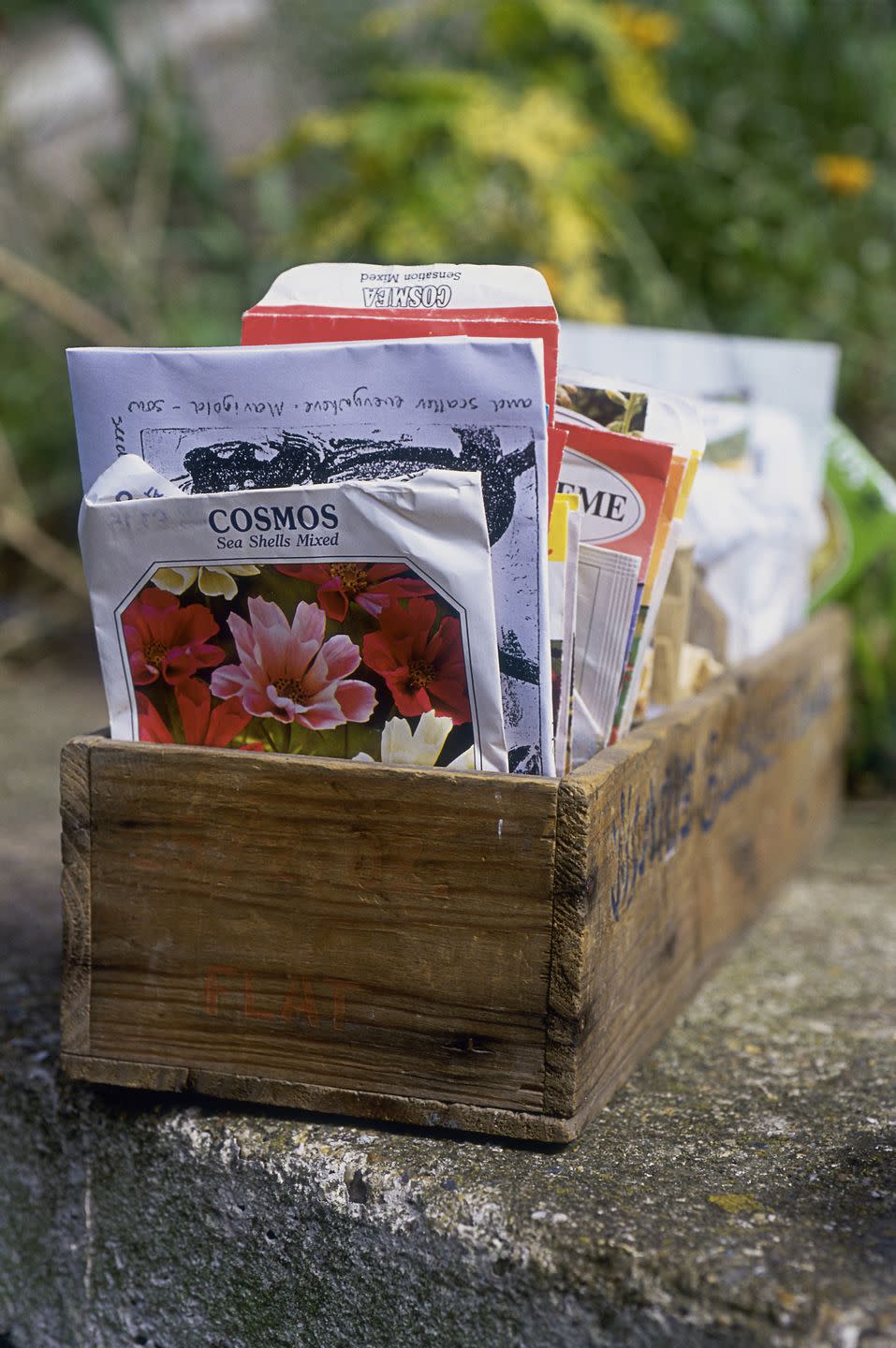
Choose metal tools
‘If you’re serious about reducing the amount of plastic in your garden, opt for metal equipment which should far outlast their plastic rivals,' say the team at The Greenhouse People. ‘Metal can rust, so a little TLC is needed at the end of each season to keep them in tip-top condition.
'Clean each tool with a rag or brush using warm soapy water, then when dry spray with WD-40 or rub down with mineral oil. Store hanging on hooks (away from the damp floor) in a dry airy location for the winter.'
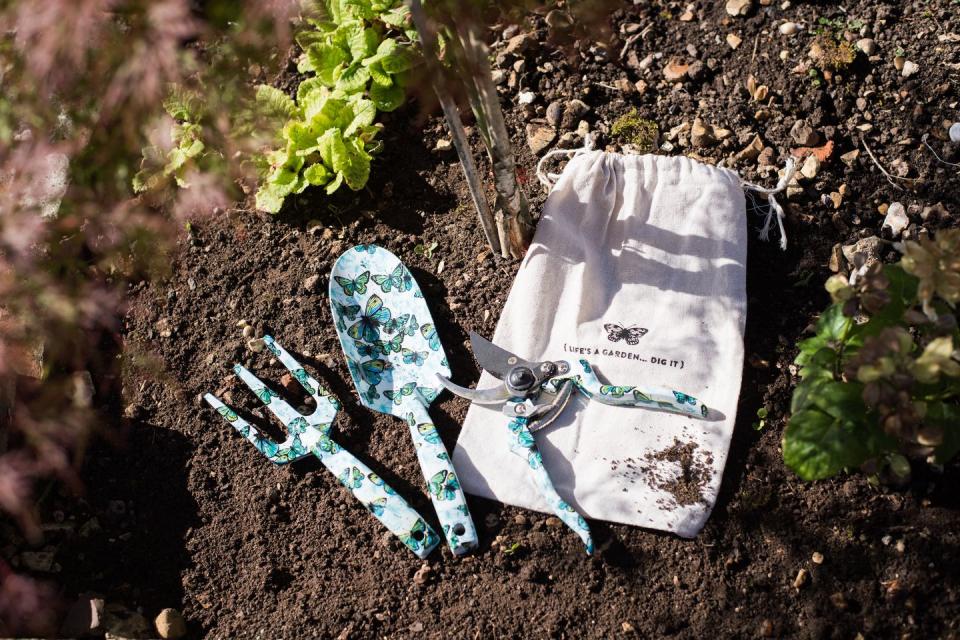
BUY NOW Floral Garden Tool Set In Gift Bag, £35.95, Notonthehighstreet.com
Sharing
Do you find that you’ve already accumulated lots of plastic-based tools and equipment? Firstly, take care of the plastic you do have and re-use it in any way you can. If you use a community allotment or have friends who also enjoy a spot of gardening, why not share your plastic equipment or hand it down?
The Conservation Foundation's 'Tools Shed' recycling project repairs broken or unwanted garden hand tools, and gives them to local school children and community volunteers for free to help them create and maintain green spaces.
‘Be a green pioneer and inspire fellow gardeners with the changes you’re making and they may just follow suit,’ says The Greenhouse People. ‘Remember, knowledge is power, so if you’re serious about preserving the environment, lead by example.'
('You Might Also Like',)

 Yahoo Finance
Yahoo Finance 
